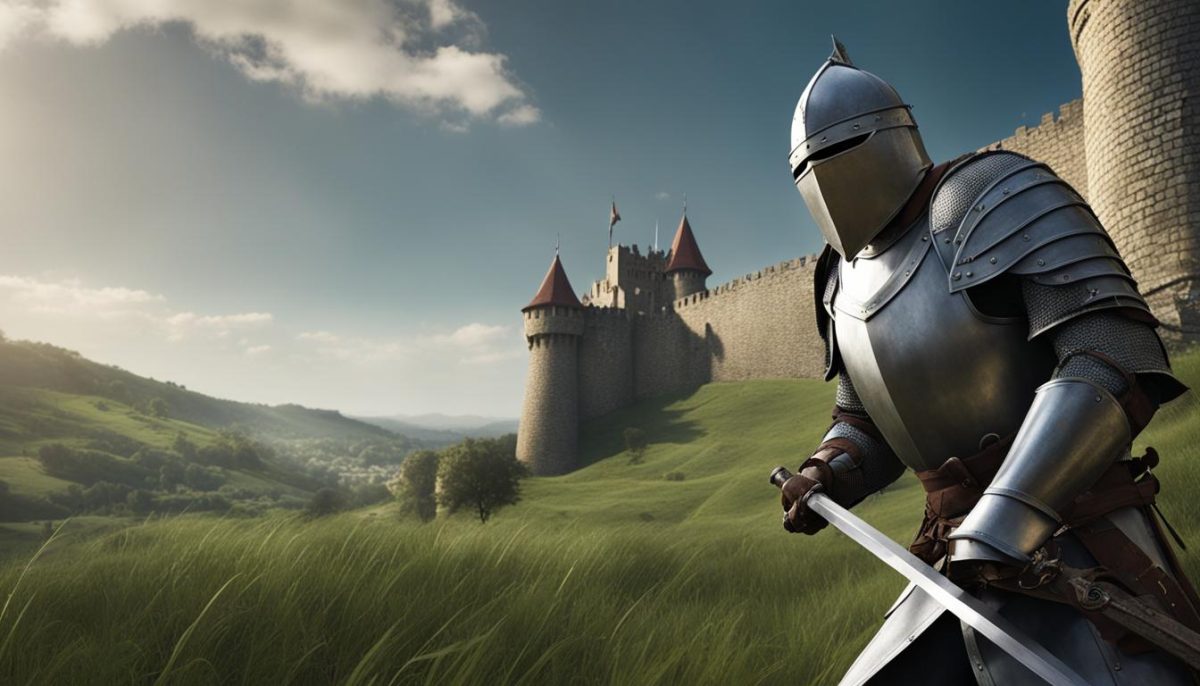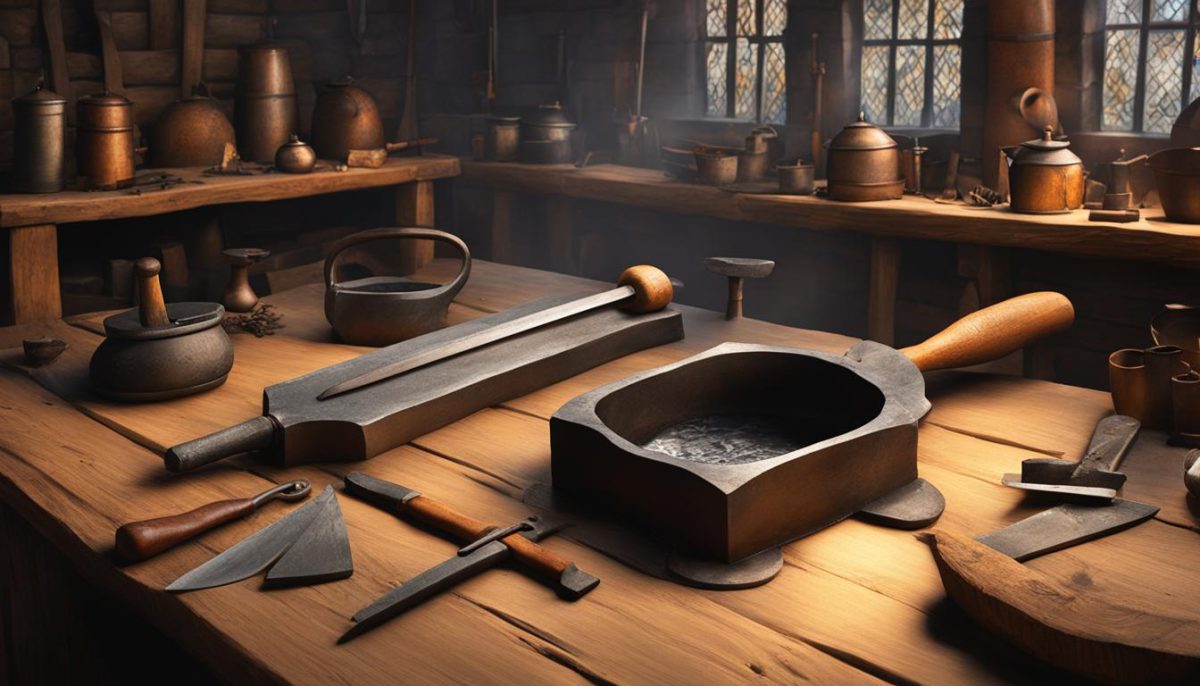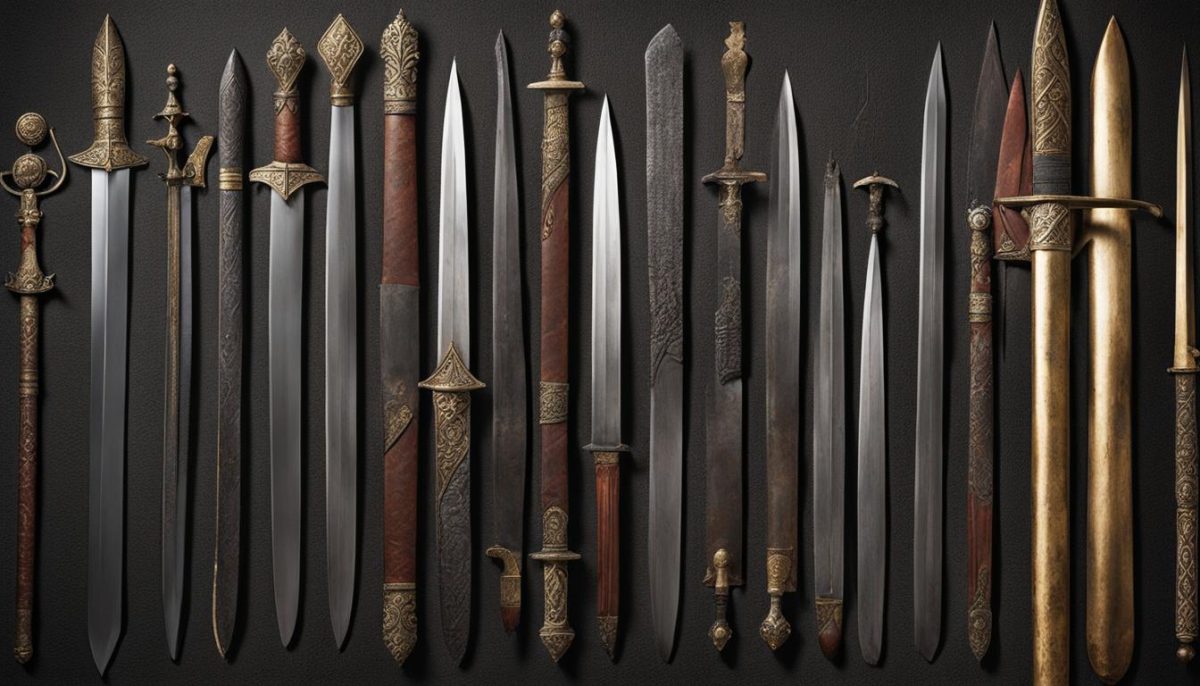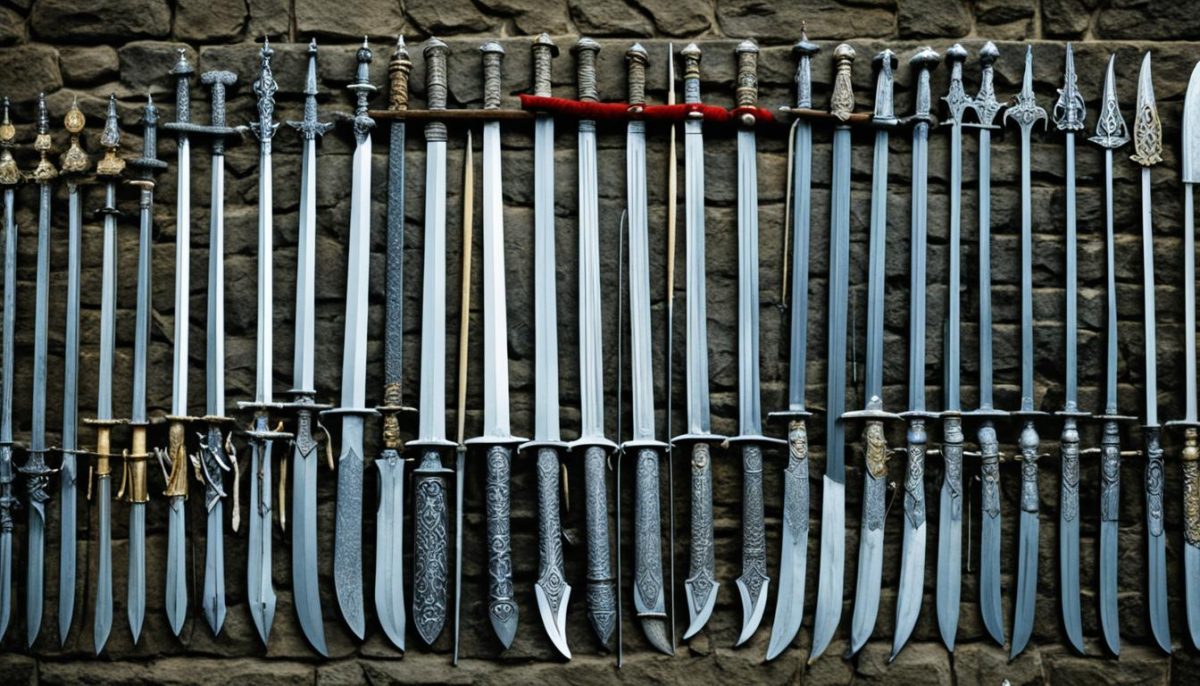The tapestry of historical combat is rich with the clashing of steel, the artistry of blade smithing, and the evolution of medieval weaponry. At the heart of this age of chivalry and warfare lay the sword, a quintessential emblem of power and prestige. Through the forge’s fiery breath, metals were transmuted into symbols of knighthood and heroism. This piece sheds light on the very essence of the European swords, unraveling the intricacies of the sword materials that fashioned the era’s mightiest weapons.
The relentless pursuit for superior weaponry during medieval times led to an extraordinary development of metallurgical techniques. Predominantly made from iron and steel, these swords were not just weapons but were also masterpieces of artistry and engineering. The secrets locked within the buried remains and the words inscribed in ancient manuscripts offer us a window into the sophisticated world of sword materials and manufacturing. Join us as we embark on a journey back in time, exploring the substance and the story of swords in medieval history.
An Overview of Medieval Swordsmanship
The medieval era heralded the epitome of swordsmanship and the sword as the linchpin of combat. Reflecting on the sword’s evolution provides keen insights into the cultural fabric of European martial arts, along with the nuances of historical fencing. From clashing iron on battlefields to esteemed duels of honor, swords are a testament to the era’s rich martial lineage and societal values.
Evolution and Significance of the Sword in Medieval Times
Swords underwent a remarkable transformation during the medieval period. Initially fashioned from wrought iron, the emergence of steel led to an evolution in design and functionality. This progression not only enhanced the capabilities of swordsmen but also mirrored the technological and cultural advancements of the times. The sword became a symbol of authority and valor, an indispensable asset to knights and warriors proving their mettle.
The Role of the Sword in Medieval Society
Swords were more than mere weapons; they were intrinsic symbols of social status and personal honor. The right to bear a sword underscored one’s position within the rigid hierarchies of medieval Europe. For the knight, a sword was an extension of his oath to uphold chivalry, while for the commoner, it provided a means of self-defense and a sense of security in an era replete with warfare and conflict.
Types of Swords Used During Medieval Times
The diversity of medieval weaponry is impressive, with each sword type catering to certain martial styles or functions. Broadly categorized, there were broadswords known for their wide blades, the versatile longswords favored by knights, and arming swords typically used with a shield. These weapon types were defined by their unique characteristics such as blade length, hilt design, and weight distribution, each serving a specific purpose in both offensive and defensive maneuvers.
Referencing ancient texts and manuals like the I.33 manuscript, the earliest known fencing manual, provides further evidence of the sophistication inherent in historical European swordsmanship. Experts in the field of historical fencing still study these documents to rediscover and teach the art of medieval combat, maintaining the legacy of medieval swordplay in contemporary European martial arts.
| Type of Sword | Characteristic | Usage |
|---|---|---|
| Broadsword | Broad, straight blade | Close-quarters combat, cutting through heavy textiles |
| Longsword | Long, double-edged blade | Both one and two-handed combat, versatile in both offense and defense |
| Arming Sword | Short, sturdy blade | Used with one hand, often accompanied by a shield |
Swordsmanship reflects the very essence of medieval life – the valor and skill at arms that defined not only personal worth but also societal order. The study of historical fencing and medieval weaponry underscores the ongoing fascination with European martial arts, revealing an unbroken thread from the past that continues to captivate enthusiasts in the present day.

Medieval Swords Made: Understanding the Materials and Craftsmanship
The art of sword making in the Middle Ages was a sophisticated blend of meticulous craftsmanship and advanced medieval metallurgy. The transition from the rudimentary bloomery iron to higher quality crucible steel marked a significant milestone in the evolution of sword crafting. This innovation heralded the creation of blades that were both stronger and more resilient, capable of withstanding the rigors of combat. The renowned iron deposits of locales such as the Noric region were vital to this era, offering materials that were instrumental in forging weapons of superior quality.
Blacksmithing was more than a trade; it was an embodiment of skill, precision, and historical wisdom. The process of creating a medieval sword was intricate and labor-intensive, signifying a mastery of technique that drew from years, often decades, of experience. Technological advancements such as pattern welding—a method involving the folding and forging of different types of iron and steel—contributed to the aesthetic beauty and structural integrity of the sword. Furthermore, quenching techniques, which involved rapidly cooling the heated metal, played a crucial role in determining the hardness and durability of the blade.
The legacy of craftsmanship that underpinned medieval sword making survives in the expertise of modern-day blacksmiths, who continue to explore historical techniques to recreate these legendary weapons. Through scholarly research, we gain deeper insights into the sophisticated material science of the era. Understanding how materials were selected and manipulated provides us with a profound appreciation for the artisans who forged not just weapons, but symbols of a bygone era—an era where the sword was a testament to the blacksmith’s ingenuity and the warrior’s prowess. The intersection of art, science, and metallurgy in the medieval sword-making process is a captivating chapter in the annals of historical combat and weaponry.


